7 Uncomfortable Habits That “Shock” Your Body Into Living Longer, According to Longevity Experts
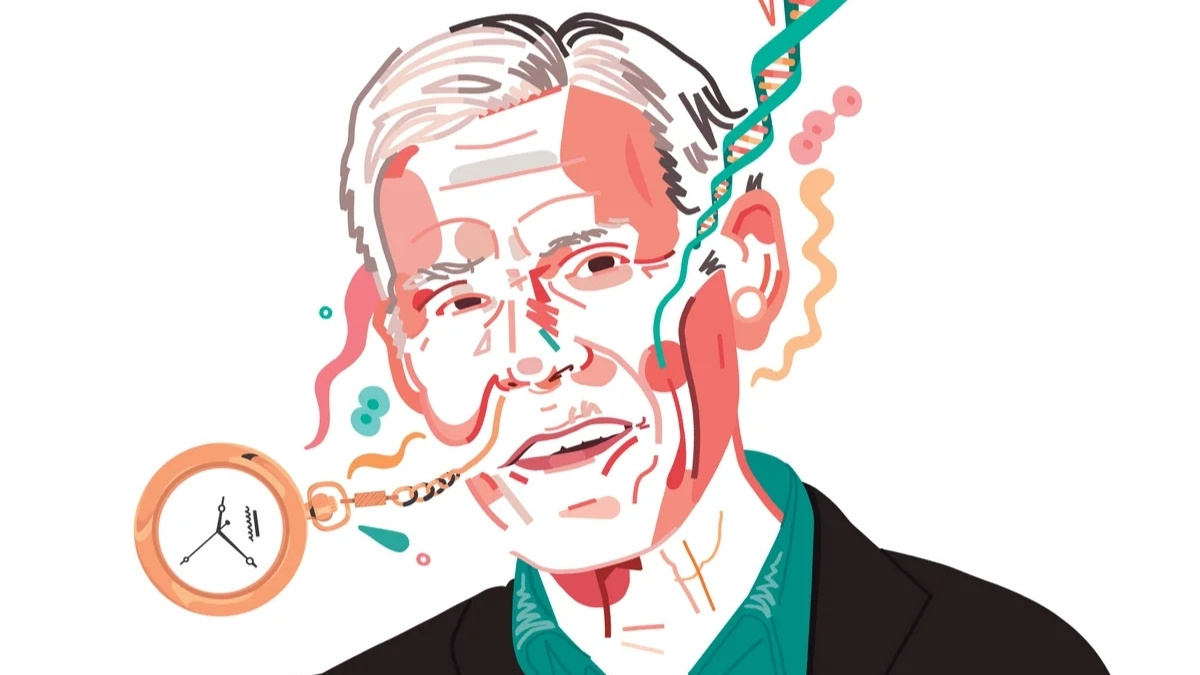
What if the secret to living a longer, healthier life isn’t found in comfort, but in strategic, intentional discomfort?
We are all living longer, but our healthspan—the number of years we live in good health—is failing to keep up. For many, the average gap between lifespan and healthspan is nearly a decade. We’re often told to avoid all forms of stress, a message that, while well-intentioned, is ultimately incomplete.
Longevity experts and the latest 2025 research now point to a more nuanced truth. The key may lie in hormesis: a biological concept suggesting that small, controlled “shocks” or stressors trigger your body’s powerful, innate repair and resilience pathways. These are the same pathways that lie dormant when we live in a state of chronic comfort.
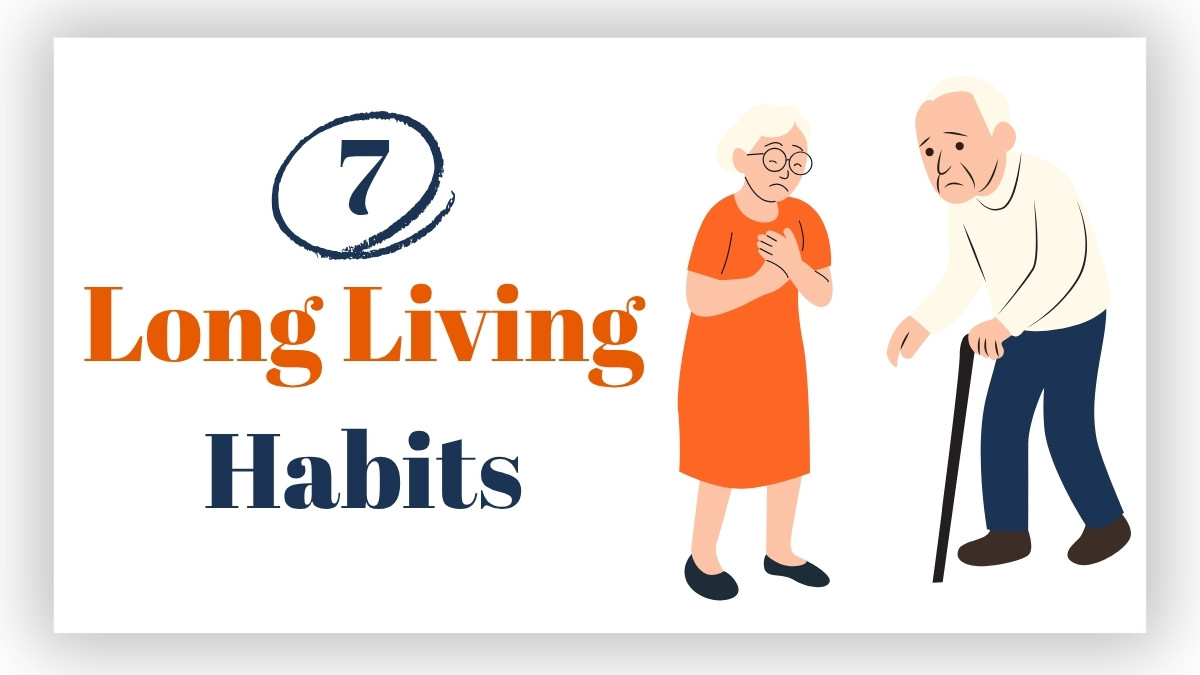
This article breaks down 7 of these uncomfortable habits for longevity, providing the new 2025 science on why they work and the expert-backed protocols for how to do them safely and effectively. These strategies are designed to help you extend healthspan 2025, activating your body’s own anti-aging machinery.
The 7 Hormetic Habits: Mechanisms & 2025 Protocols
1. Embrace the Cold: Activate Cellular Repair with Cold Exposure

Habit 1 is embracing the cold. This is the most popular and visually recognized form of hormesis, championed by longevity experts and neuroscientists like Dr. Andrew Huberman of Stanford. The practice of deliberate cold exposure, whether through a cold shower or an ice bath, is far more than a test of mental toughness; it’s a precise biological “shock” that activates deep longevity pathways.
The ‘Shock’ (The Science)

A May 2025 review in Nature Aging identifies lowered body temperature as a “long-established determinant of longevity”. The researchers note that the anti-aging mechanism isn’t just a simple slowing of metabolism. Instead, cold exposure activates specific genetic pathways, including “RNA-binding cold shock proteins” and “nutrient sensing” pathways that regulate healthspan.
This hormetic stressor works in three primary ways:
- Clearing Cellular “Junk” (Proteostasis): As you age, damaged and misfolded proteins can build up in your cells, leading to dysfunction and diseases like Alzheimer’s and ALS. A 2023 Nature Aging study made a groundbreaking discovery: cold exposure extends longevity by activating a specific proteasome regulator known as PA28γ.
- Building Cellular Resilience (Autophagy): A 2024/2025 study from the University of Ottawa found that repeated cold-water immersion significantly enhances autophagic function. Autophagy is your cell’s “self-cleaning” and recycling process. By repeatedly exposing the body to cold, you are acclimating it. This adaptation helps your cells manage stress more effectively and slows aging at the cellular level.
- Activating Your “Metabolic Furnace” (BAT): Cold is the most potent way to activate Brown Adipose Tissue (BAT), or “good fat”. Unlike white fat, which stores energy, BAT is metabolically active. 2024/2025 studies confirm that when you get cold, BAT ignites non-shivering thermogenesis, burning glucose and fat from your bloodstream to create heat.
It’s crucial to understand the dose-response relationship. While intermittent, acute cold provides this hormetic benefit , epidemiological studies show that chronic, inescapable cold can increase mortality. The benefit lies in the “U-shaped curve”: a non-zero level of stress is needed to minimize risk, but too much is harmful.
The ‘Action’ (The 2025 Protocol)

The good news is that you don’t need to be an extremist to reap the rewards. The protocol for an Andrew Huberman cold plunge, based on his review of the scientific literature, is surprisingly manageable.
The goal is to accumulate 11 minutes total per week of deliberate cold exposure.
- Frequency: Split this total into 2-4 sessions per week.
- Duration: Each session should last 1-5 minutes.
- Temperature: The water should be uncomfortably cold but safe. You should feel a strong desire to get out, but be able to stay in safely.
- Pro-Tip: For added metabolic benefit, Dr. Huberman suggests (if you are also using a sauna) to end with cold. Afterward, try to air dry rather than towel off, as the natural shivering enhances the metabolic effect.
2. Feel the Heat: Use Saunas to Trigger “Heat Shock” Longevity
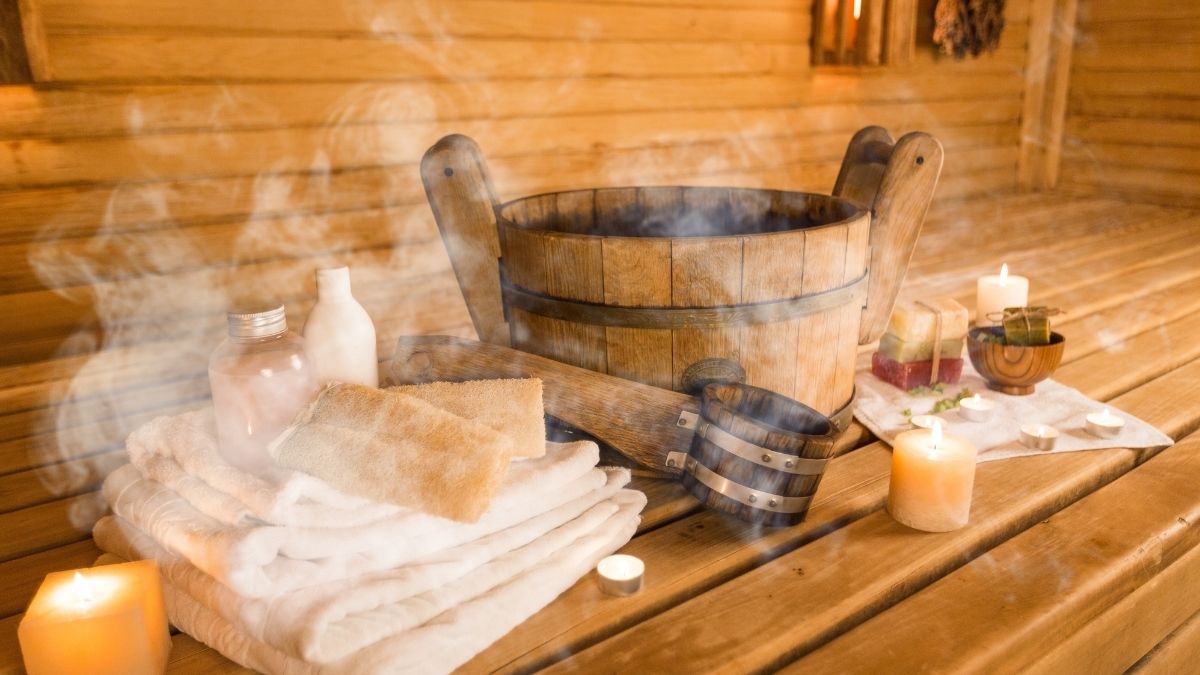
On the other end of the thermometer, Habit 2 is deliberate heat exposure, typically through sauna for longevity. While it may feel relaxing, this practice is a significant form of hyperthermic stress, and it comes with some of the most stunning and robust data on human longevity.
The ‘Shock’ (The Science)
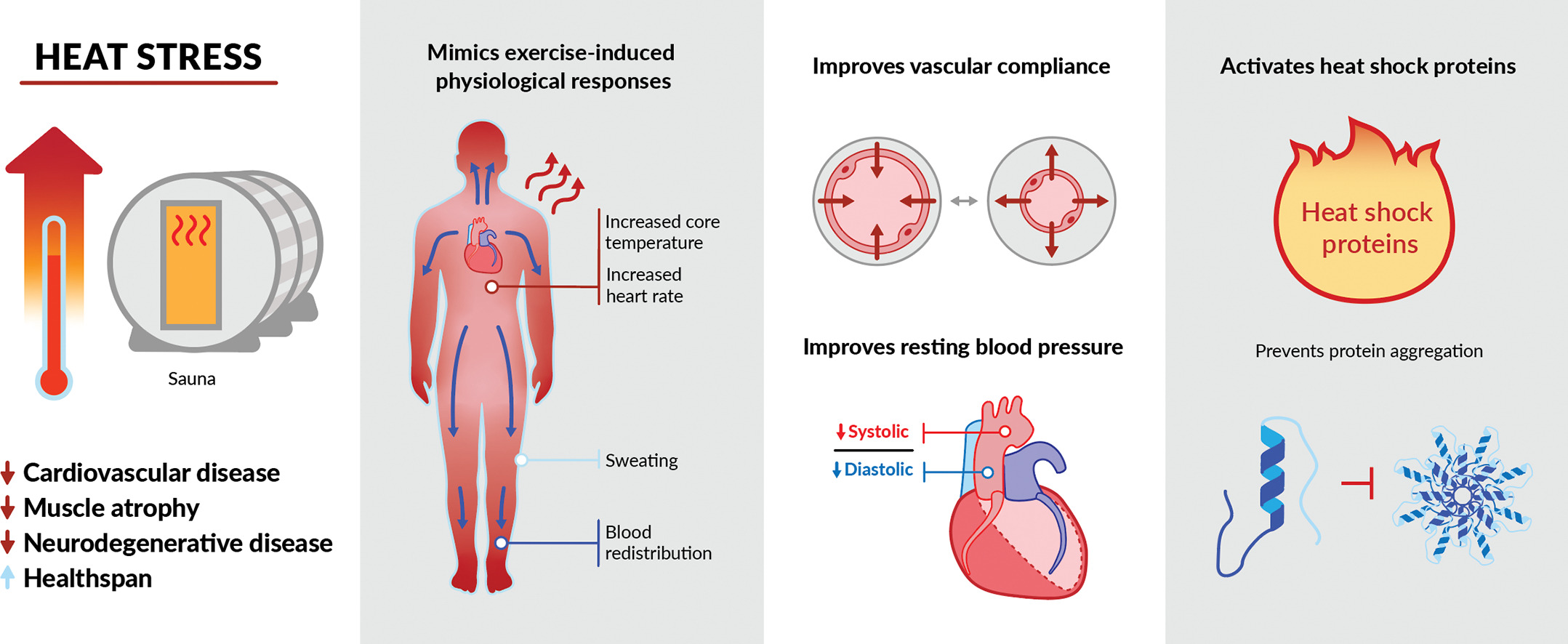
The “why” for this habit is built on large-scale Finnish studies, which were famously analyzed and popularized by Dr. Rhonda Patrick. These studies, which followed thousands of men for decades, found that frequent sauna use (defined as 4-7 times per week) was associated with:
- A 40% lower all-cause mortality risk compared to men who used the sauna once a week.
- A 50% lower cardiovascular disease risk.
- A 66% lower risk of dementia and a 65% lower risk of Alzheimer’s disease.
This profound neuroprotective effect is the most significant takeaway. The “shock” of the heat works by:
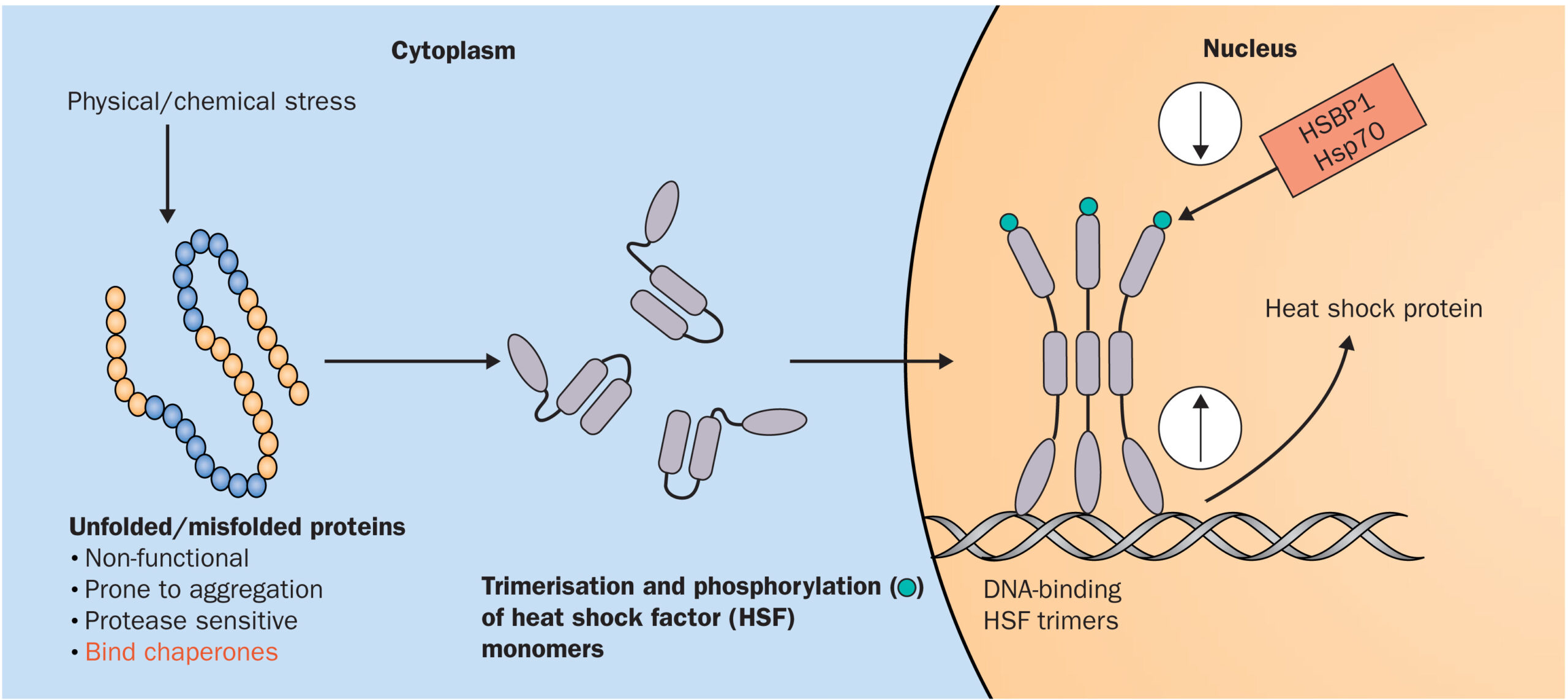
- Activating “Heat Shock” Proteins (HSPs): High heat, or “hyperthermic conditioning” , triggers a massive release of Heat Shock Proteins. These proteins act as “chaperones” for your other proteins. They find damaged, misfolded, or aggregated proteins (like the amyloid-beta plaques associated with Alzheimer’s) and help repair them or tag them for removal.
- Triggering “Longevity Genes” (Sirtuins): Like fasting, heat stress is a “sirtuin activator”. 2025 research identifies sirtuins (SIRT1−SIRT7) as a family of enzymes critical for regulating DNA repair, inflammation, and metabolic health.
- Mimicking Cardiovascular Exercise: Sauna use mimics the effects of moderate exercise. It increases heart rate, improves blood flow to the heart and muscles, lowers blood pressure, and improves endothelial function (the flexibility of your blood vessels).
Furthermore, 2025 research has also explicitly linked regular sauna bathing to better deep sleep. This creates a powerful positive feedback loop: the sauna improves sleep quality, and that enhanced deep sleep is when the brain’s “glymphatic system” (its own cleaning crew) is most active, further boosting the cellular repair initiated by the heat.
The ‘Action’ (The 2025 Protocol)

To get these benefits, consistency and temperature are key. Longevity expert Dr. Peter Attia points to the Finnish data to establish a “minimum effective dose”.
The Peter Attia sauna protocol is:
- Frequency: 4 times per week.
- Duration: 20 minutes per session.
- Temperature: At least 175°F (80°C). The benefits are dose-dependent on temperature.
3. Restrict Your Clock: Trigger Cellular “Self-Cleaning” with Intermittent Fasting

This uncomfortable habit isn’t about what you eat, but when you don’t. Intermittent Fasting (IF) is a form of metabolic hormetic stress. By intentionally restricting your eating window, you force your body to adapt, flipping a powerful metabolic switch from “growth” mode to “repair” mode.
The ‘Shock’ (The Science)
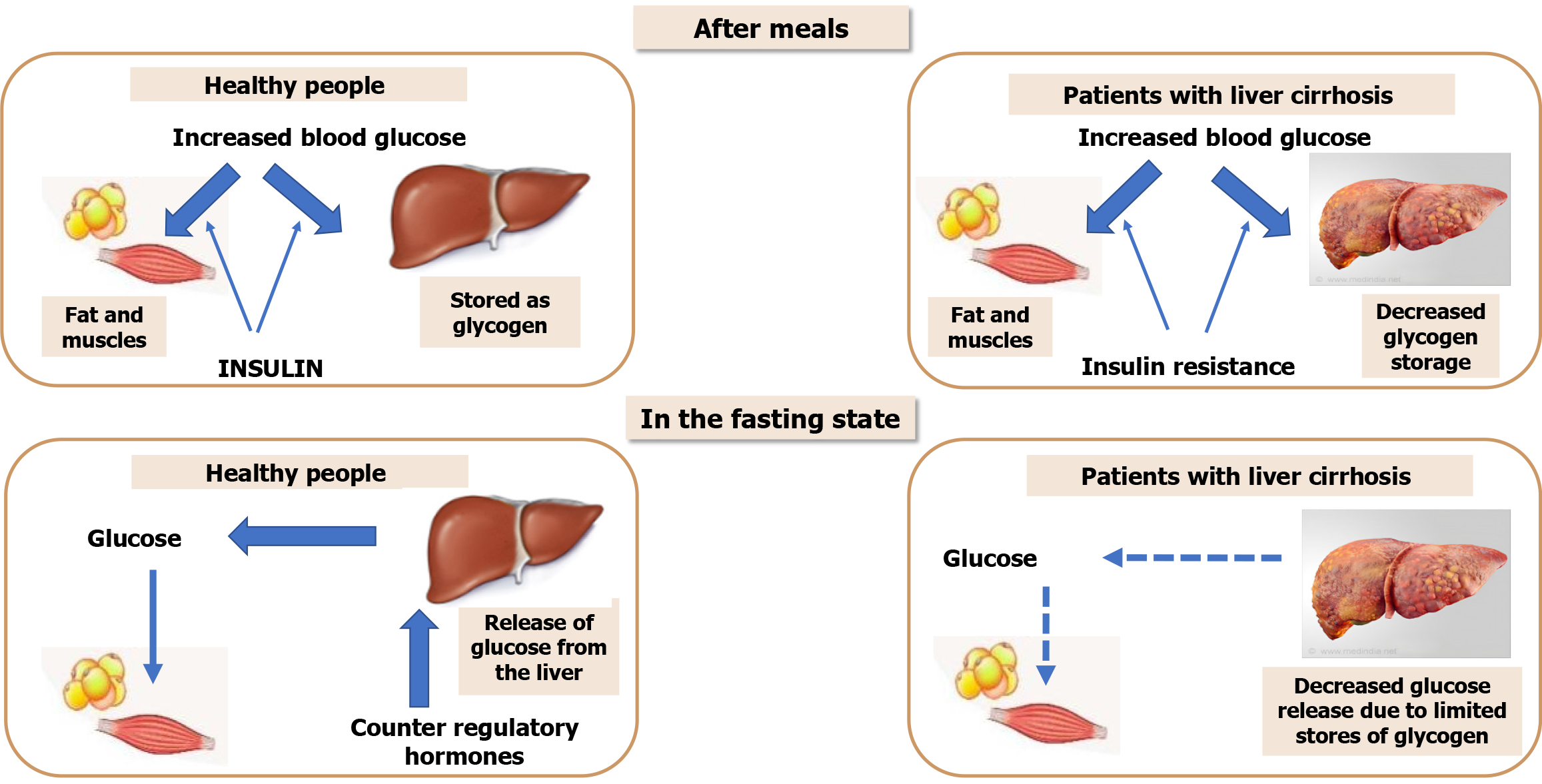
When you are constantly eating, your body is in a “fed state,” dominated by the mTOR pathway, which signals cells to grow and divide. When you fast, your body flips to a “fasted state,” down-regulating mTOR and up-regulating a crucial repair process.
- Activating Autophagy (Cellular “Self-Cleaning”): This is the most critical benefit. Fasting is the most potent non-pharmacological way to induce autophagy. This is your body’s “housekeeping” process.
- Improving Insulin Sensitivity: A modern diet keeps insulin levels high, leading to insulin resistance, a hallmark of aging, obesity, and type 2 diabetes. Fasting gives your pancreas a rest, lowering fasting blood glucose and dramatically improving your cells’ insulin sensitivity.
The results found that while all three diets improved weight and blood sugar, the 5:2 Intermittent Energy Restriction (IER) diet (eating normally 5 days, restricting calories on 2) showed “greater advantages” in reducing fasting blood glucose, improving insulin sensitivity, and strengthening adherence compared to Time-Restricted Eating (TRE).
The ‘Action’ (The 2025 Protocol)
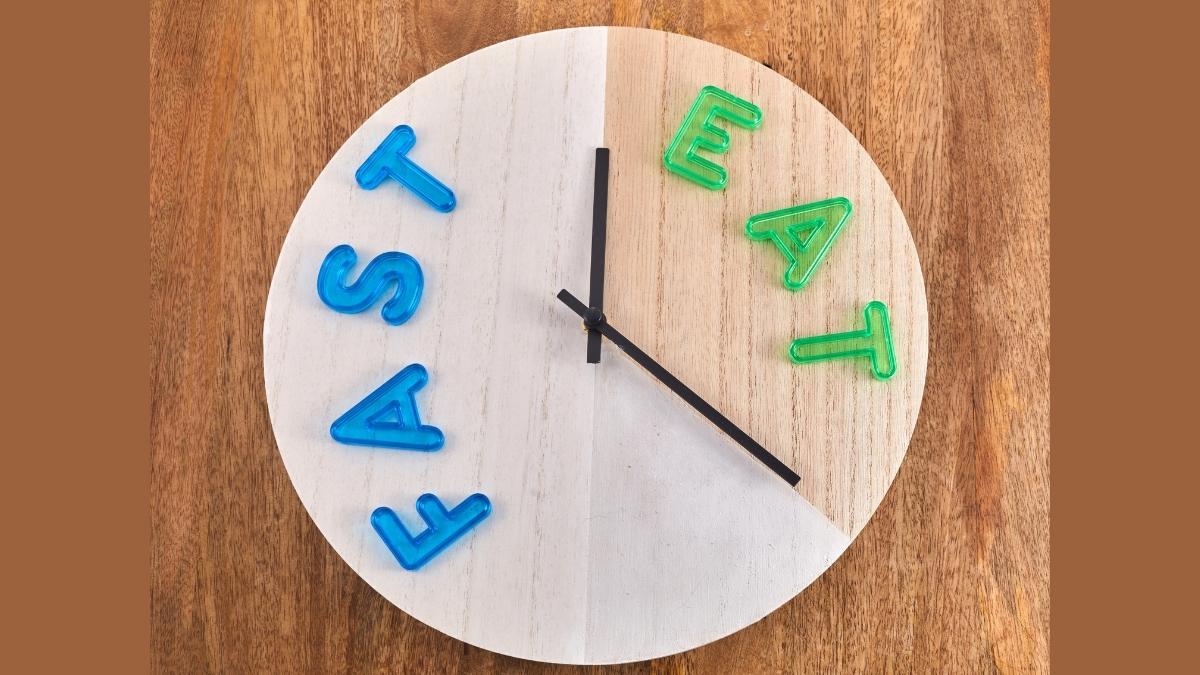
Based on the latest data, you have two main, science-backed options for intermittent fasting 2025.
- Protocol 1 (The 2025 Metabolic Winner): The 5:2 IER Diet. As per the ENDO 2025 study, this involves eating your normal diet 5 days a week and significantly restricting calories (e.g., to 500-600 calories) on 2 non-consecutive days.
- Protocol 2 (The Classic): 16:8 Time-Restricted Eating (TRE). This method, practiced by experts like Harvard’s Dr. David Sinclair, involves fasting for 16 hours a day and eating all meals within an 8-hour window. A simple rule of thumb, backed by 2025 research on circadian rhythms and autophagy, is to “Eat during daylight hours and not when it’s dark outside”.
A critical piece of nuance, however, comes from a 2025 study in Aging Cell that noted a U-shaped association for mortality and eating windows. While 11-12 hour windows were optimal, eating windows shorter than 8 hours were associated with higher mortality. This suggests that while fasting is good, extreme fasting may be detrimental. The 16:8 or 5:2 approaches appear to be a safer, more sustainable “sweet spot” than more aggressive 20+ hour fasts.
4. Get Breathless: Reverse Cellular Aging with High-Intensity Exercise

If you are comfortable during your entire workout, you are missing a key longevity benefit. Moderate exercise is vital , but Habit 4 is about the unique discomfort of getting breathless with High-Intensity Interval Training (HIIT). This acute physical stress provides unique anti-aging benefits at the cellular level that steady-state cardio does not.
The ‘Shock’ (The Science)
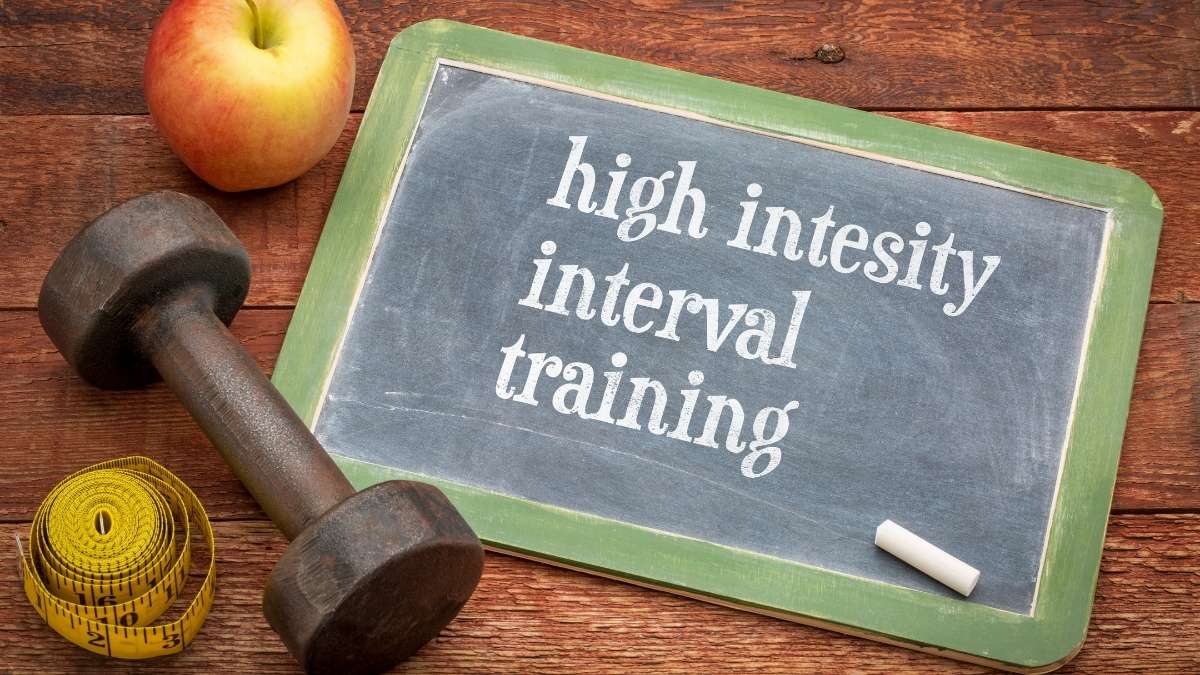
This intense, breathless “shock” targets two of the most fundamental components of aging: your mitochondria and your DNA.
- Rebuilding Your “Power Plants” (Mitochondrial Biogenesis): Your mitochondria are your cells’ “power plants,” and their function declines sharply with age. HIIT is the most potent stimulus for mitochondrial biogenesis—the creation of new, more efficient mitochondria.
- Protecting Your Genetic “Clock” (Telomeres): Telomeres are the protective caps on the ends of your DNA. They shorten every time a cell divides, and their length is a primary biomarker for biological aging. A 2025 systematic review found that HIIT interventions led to “increased telomerase activity and telomere length,” effectively slowing or even reversing this aging “clock”.
The data on mortality is just as stark. A 5-year study on seniors found that the group assigned to regular HIIT had a mortality rate of just 3%, compared to 5.9% in the moderate-intensity group—nearly half the risk.
The ‘Action’ (The 2025 Protocol)
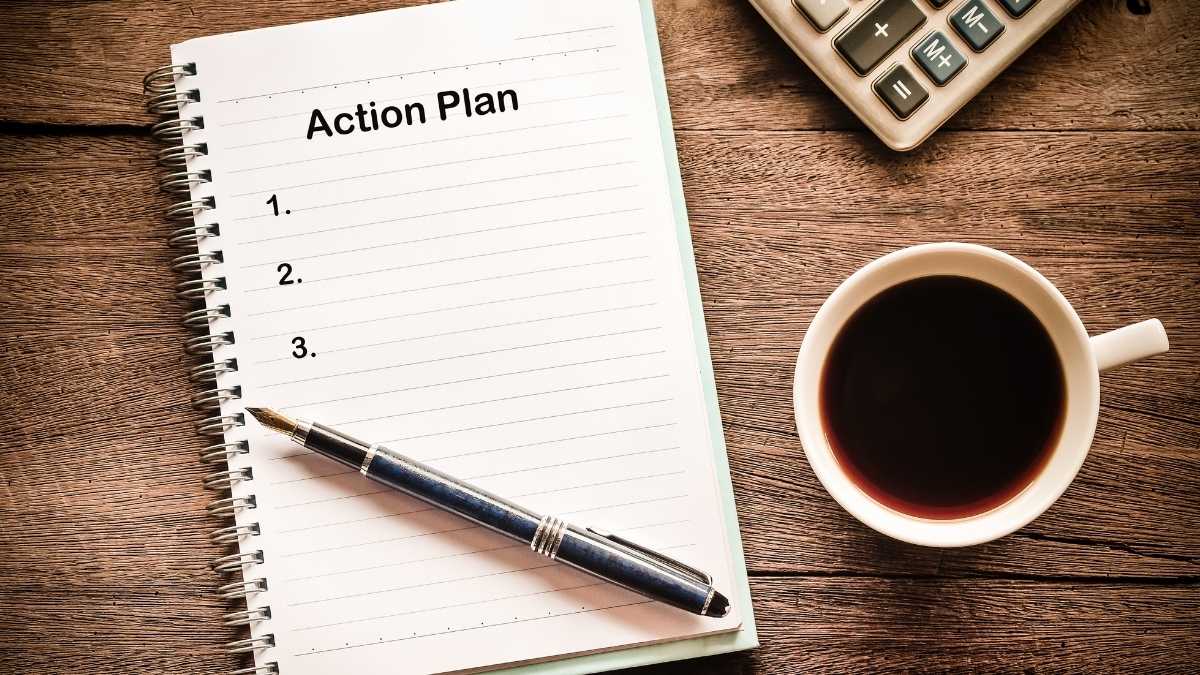
This habit is all about improving your VO2 Max (your body’s maximum oxygen utilization), a metric Dr. Peter Attia calls “the single strongest predictor of longevity,” outperforming even cholesterol or blood pressure.
To train your Peter Attia VO2 max, he prescribes the “4×4 Protocol,” developed by exercise metabolism expert Dr. Iñigo San-Millán.
- Warm-up: 10-15 minutes of light cardio.
- Interval: 4 minutes at the highest intensity you can possibly sustain for that full 4-minute period (this is your Zone 5).
- Recovery: 4 minutes of very light, active recovery (e.g., walking or slow pedaling, your Zone 2).
- Repeat: 4 to 6 times.
- Cool-down: 5-10 minutes.
This entire workout, which takes about an hour, only needs to be done 1-2 times per week to reap significant longevity benefits. This is supported by 2025 research on “Weekend Warriors,” which found that as long as you get your 75 minutes of vigorous activity per week, it doesn’t matter if you do it in one or two sessions. This confirms a key 2025 trend: for longevity, intensity can be a more efficient and powerful lever than duration.
5. Practice “Air Hunger”: Use Breathwork to Control Stress and Inflammation
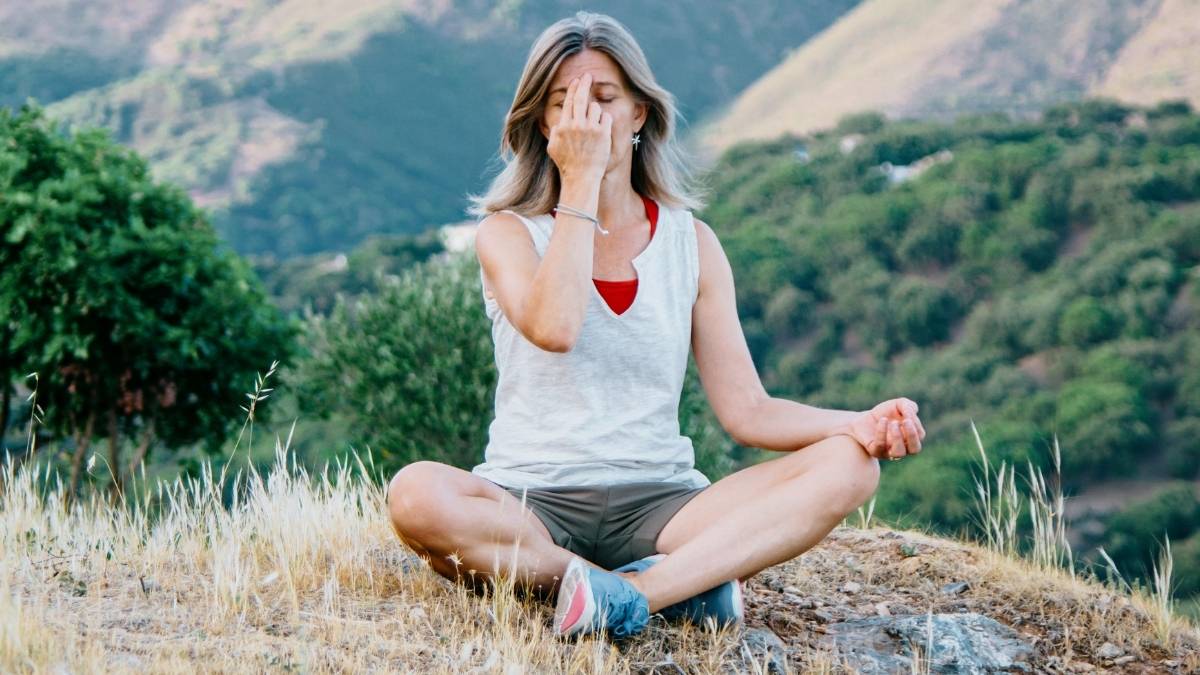
This habit is uncomfortable in two distinct ways: either it’s too fast and induces “air hunger,” or it’s strategically slow and requires conscious control. In both cases, the goal is the same: to use your breath as a lever to “hack” your autonomic nervous system, proving you can take conscious control of “automatic” processes like stress and inflammation.
The ‘Shock’ (The Science)
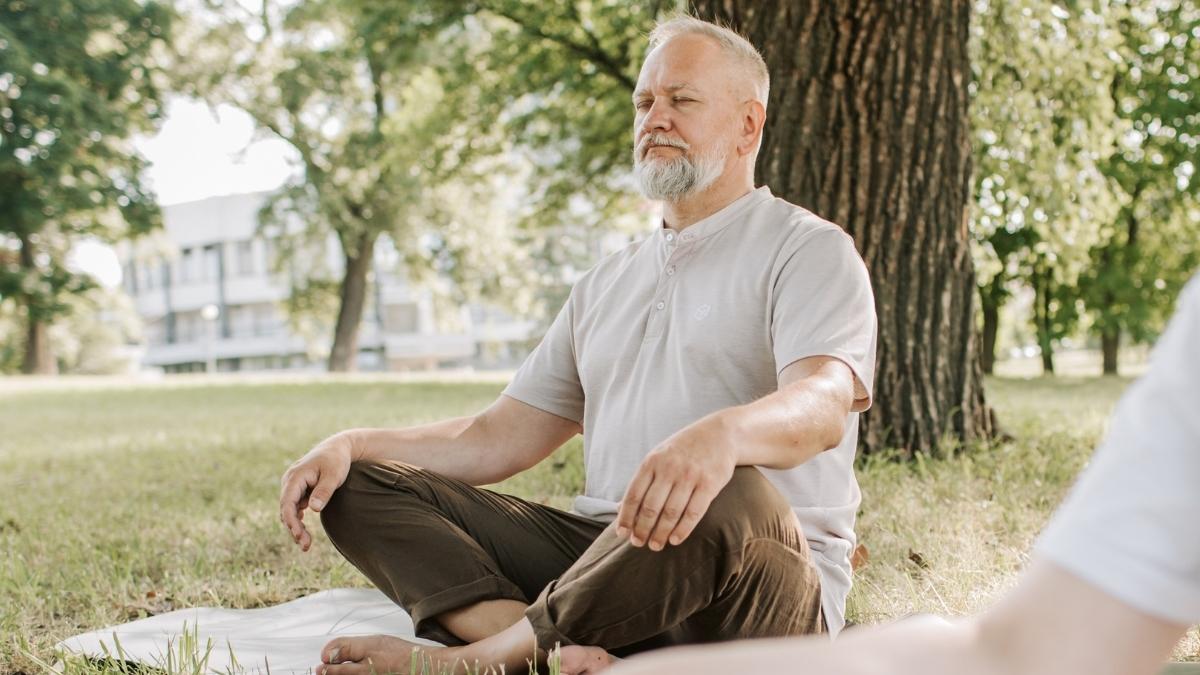
This “shock” to your respiratory system can be directed in two ways: one to fight inflammation, and one to defeat acute stress.
- The “Fast” Shock (Hacking Your Immune System): The Wim Hof Method (WHM) combines cold exposure with rounds of cyclic hyperventilation (30-40 deep, fast breaths) followed by a long breath-hold. A systematic review of eight trials confirmed its powerful biological effect.
- The “Slow” Shock (Hacking Your Stress Response): For daily stress, the “shock” is actually a sigh. A 2024 study published in Cell Reports Medicine found that just 5 minutes of daily “cyclic breathing”—also known as the Physiological Sigh—was more effective at improving mood and reducing stress than 5 minutes of mindfulness meditation.
The ‘Action’ (The 2025 Protocol)

You can use these two protocols for two different purposes:
- To Defeat Daily Stress: The Physiological Sigh.
- How: Take two sharp, deep inhales through your nose (a big one, immediately followed by a short second one to inflate the last air sacs in your lungs).
- Then: A single, long, slow, complete exhale through your mouth.
- When: Do this 1-3 times anytime you feel your stress levels rising. Or, practice it for 5 minutes straight once a day for a profound anti-anxiety effect.
- To Fight Inflammation: The Wim Hof Method.
- How: In a safe, comfortable place (like a bed or sofa), take 30-40 deep, fast breaths (“in-out, in-out”).
- Then: After the last breath, exhale fully and hold your breath on the “empty” lung for as long as you comfortably can (“air hunger”).
- Then: Take one deep breath in and hold for 15 seconds.
- Repeat: 3-4 rounds.
- CRITICAL SAFETY WARNING: This is an intense hormetic stressor that can cause lightheadedness or fainting. It must only be practiced in a safe environment and NEVER near water (e.g., in a bath, pool, or before swimming).
6. Strain Your Brain: Build Cognitive Reserve by Learning Difficult Skills
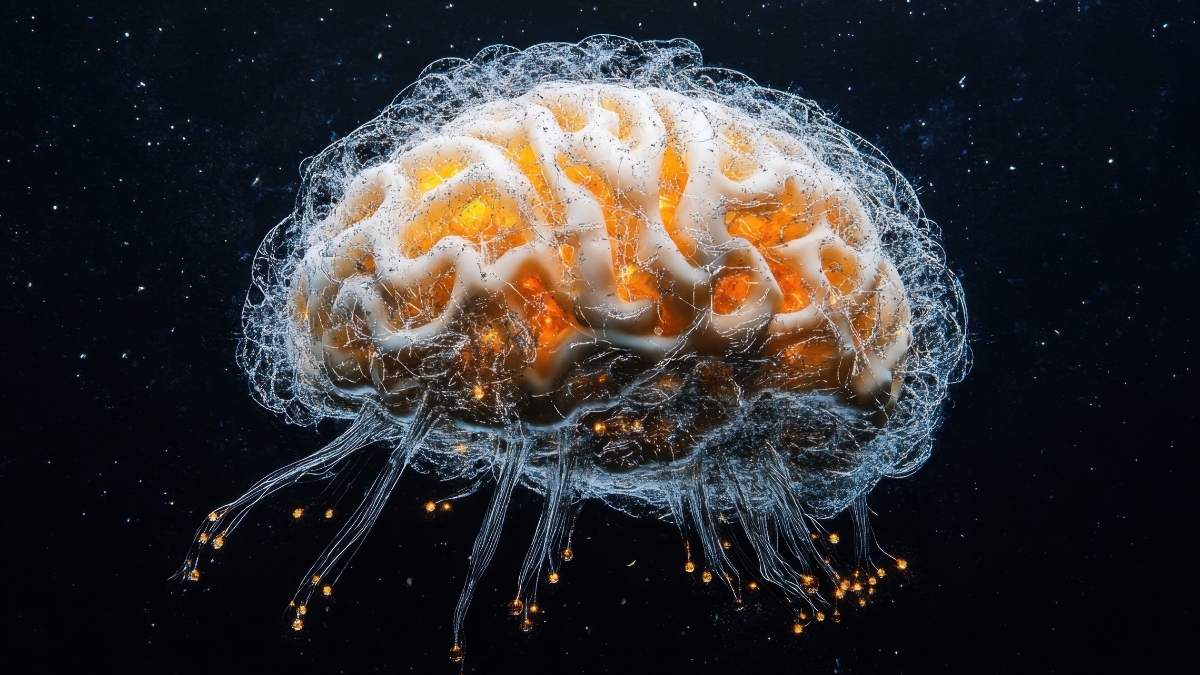
The sixth “uncomfortable habit” is mental, not physical: engaging in cognitive strain. This is not the comfortable, passive scrolling or the 1,000th sudoku puzzle you’ve mastered. It’s the “uncomfortable” strain of being a true beginner at something complex, forcing your brain to adapt.
The ‘Shock’ (The Science)

Your brain, like your muscles, operates on a “use it or lose it” principle. This effortful learning is a hormetic stressor for your neurons, and the “shock” it sends is crucial for building a resilient, age-proof brain.
- Inducing Neuroplasticity: Learning difficult new skills is the most powerful way to induce neuroplasticity—your brain’s ability to physically reorganize, form new neural connections, and even create new neurons. This ability declines with age, and that decline is a root cause of age-related cognitive impairment. Effortful learning is the “shock” that re-activates it.
- Building Cognitive Reserve (The “Brain Buffer”): This is the key. Active, challenging learning builds Cognitive Reserve. A 2024 report from Alzheimer’s Research UK defines this as the brain’s ability to function well even when it is physically damaged by diseases like Alzheimer’s. This “buffer” is why researchers believe that 45% of dementia cases are linked to modifiable risk factors.
With an estimated 7.1 million Americans living with Alzheimer’s, a number projected to hit 13.9 million by 2060, this habit is not an intellectual luxury—it is an essential strategy for protecting your brainspan.
The ‘Action’ (The 2025 Protocol)
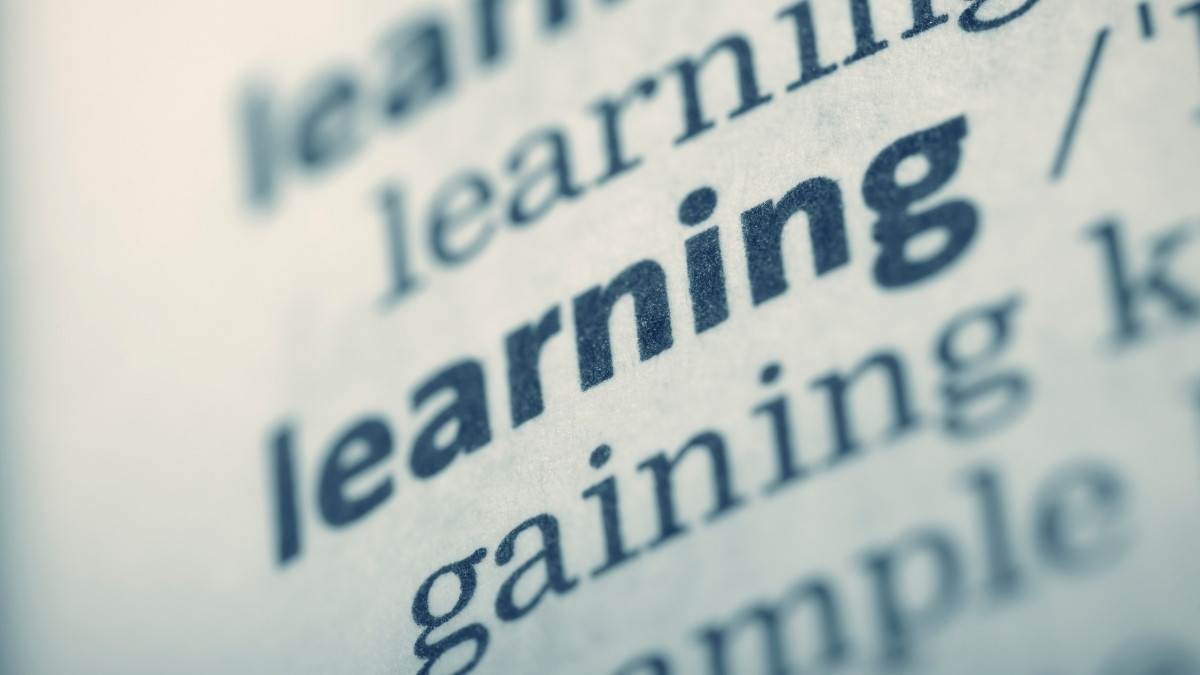
What should you learn in 2025 to build this “brain buffer”? The key is novelty and difficulty.
- Learn Complex “Human Skills”: A 2024 Degreed report highlighted that in the new age of AI, the top skills workers are learning are human-centric: leadership, communication, project management, and problem-solving. These complex, social, and emotional skills are perfect for building cognitive reserve because they challenge your brain on multiple levels.
- Learn a Physical/Mental “Stacked” Skill: Don’t just learn a mental task. A 2025 review showed that interventions that combine cognitive tasks with physical exercise (like Taekwondo) were effective at improving nerve growth factor (NGF), a key protein for brain health. Learning a musical instrument, a new dance, or a complex sport are all perfect examples.
This presents a modern, actionable solution. The exact “uncomfortable” mental strain that many feel in 2025—the need to adapt and learn new skills to keep up with a changing world —is the exact type of cognitive stress needed to build a resilient, dementia-proof brain.
7. Eat Bitter Foods: Use Plant “Toxins” to Activate Your Defense Pathways
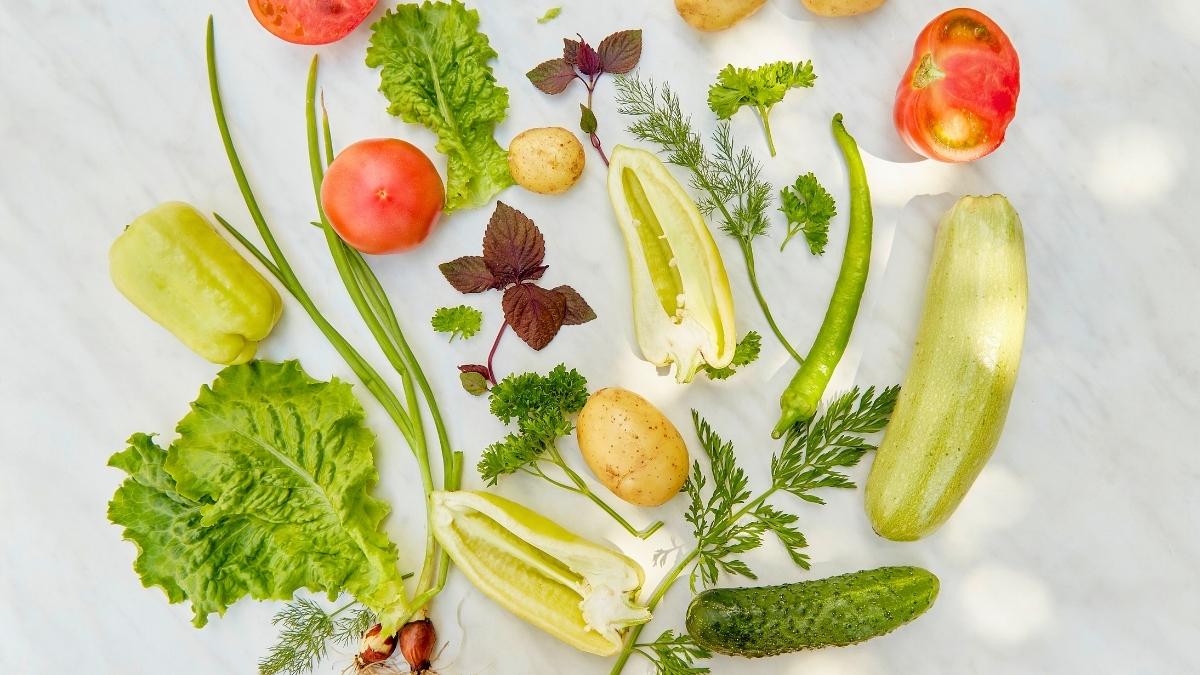
Our final “uncomfortable habit” involves your diet. It’s the intentional consumption of bitter, pungent, or astringent plant foods. Think of the “peppery” kick of high-quality olive oil, the sharp bitterness of broccoli sprouts, or the astringency of green tea.
The ‘Shock’ (The Science)
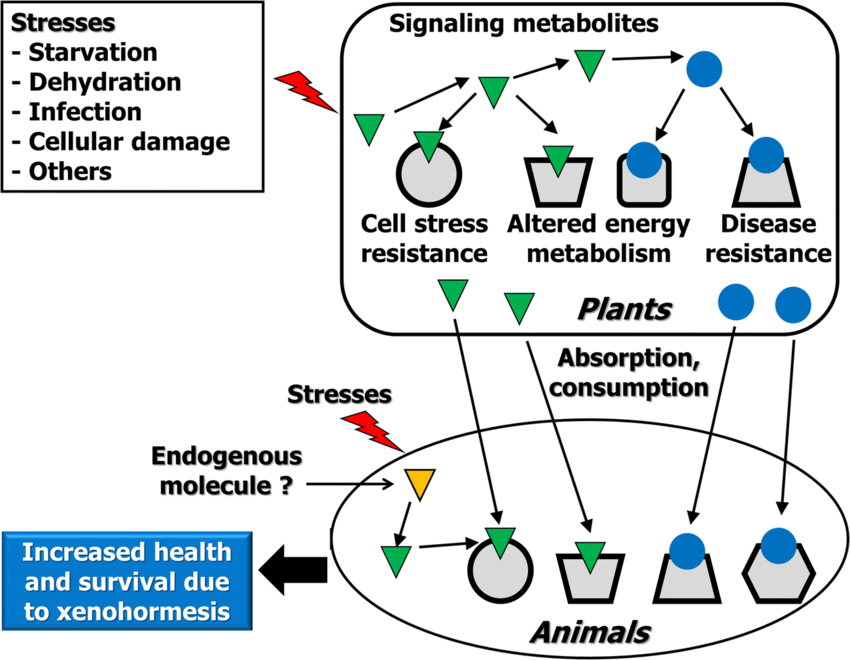
This concept is called Xenohormesis. Plants can’t run from stress (e.g., intense sun, insects, poor soil). To survive, they produce a chemical arsenal of protective compounds called phytochemicals.
These compounds are, technically, mild “toxins” or stressors. When you eat them, your body “borrows” their stress signal, which in turn activates your own ancient, powerful survival pathways.
- Activating the “Master Regulator” (Nrf2): Many of these bitter compounds—like sulforaphane from broccoli or curcumin from turmeric —are potent activators of the Nrf2 pathway. Nrf2 is the “master regulator” of your body’s antioxidant, detoxification, and cell-defense systems. It is your primary defense against oxidative stress, a key driver of aging.
- Activating “Longevity Genes” (Sirtuins): This is the core of Dr. David Sinclair’s “Information Theory of Aging”. He argues that Resveratrol, a phytochemical found in grape skins, is a xenohormetin that activates the SIRT1 “longevity gene”. SIRT1 is crucial for DNA repair and mimics the anti-aging benefits of caloric restriction.
This reframes “healthy eating.” It’s not just about the vitamins (what’s in the plant) but about the stress the plant endured. You are, in a sense, consuming the plant’s resilience. 2024 and 2025 reviews confirm that a diet rich in these phytochemicals longevity 2025 is essential for extending healthspan.
The ‘Action’ (The 2025 Protocol)
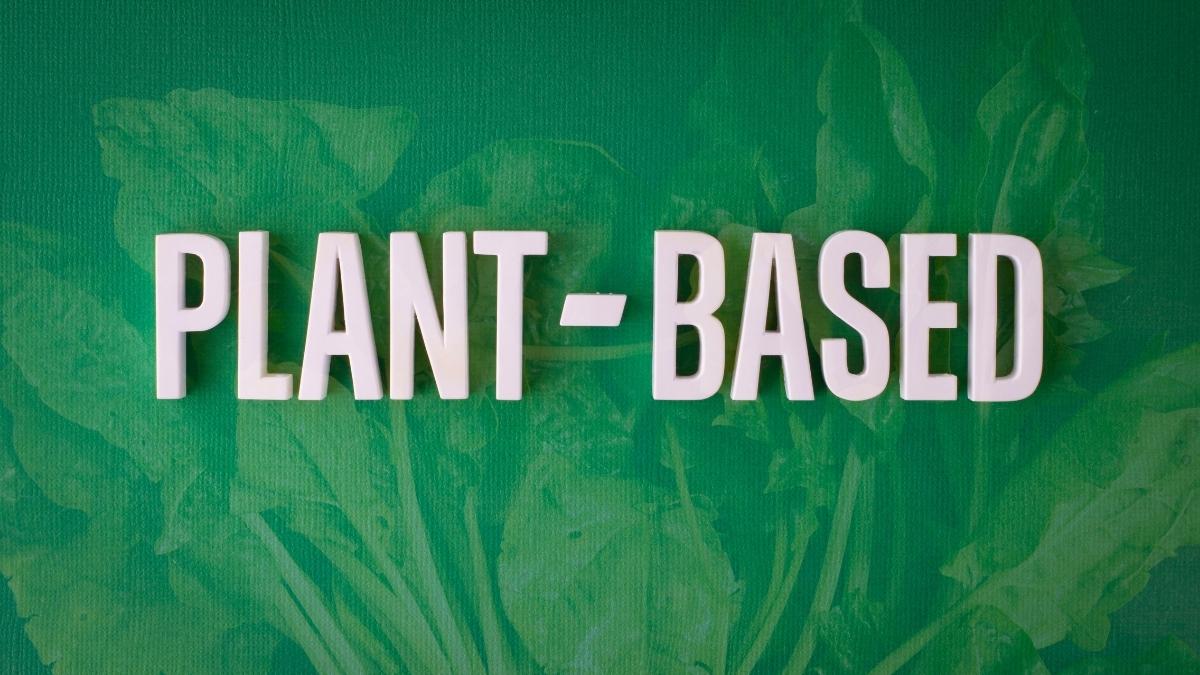
You don’t need exotic supplements to practice xenohormesis.
- Action 1: Add Broccoli Sprouts. These are a nutritional powerhouse. Studies show they contain 10 to 100 times more Nrf2-activating sulforaphane than mature broccoli. Add a small handful to your salad or smoothie.
- Action 2: Use “Peppery” Extra Virgin Olive Oil (EVOO). That bitter, peppery “kick” in high-quality EVOO is not a flaw; it’s the signature of high levels of secoiridoids and other phenolics. These compounds are scientifically shown to activate the Nrf2 and AMPK pathways.
- Action 3 (The Sinclair Method): Dr. David Sinclair takes 1g of Resveratrol daily, often with yogurt to improve absorption.
- A Note on Nuance: To maintain full scientific transparency, it is important to note that the claims around Resveratrol and sirtuins, while popular, are controversial.
Conclusion: Exchange Comfort for Resilience;
The path to a longer, more vibrant healthspan is not paved with comfort. As the latest 2025 science shows, living a life free of all stress is not the goal; the goal is to be smarter about the stress you engage with.
These 7 uncomfortable habits for longevity are all forms of hormesis—intentional, low-dose stressors that “shock” your body into repairing, rebuilding, and becoming more resilient.
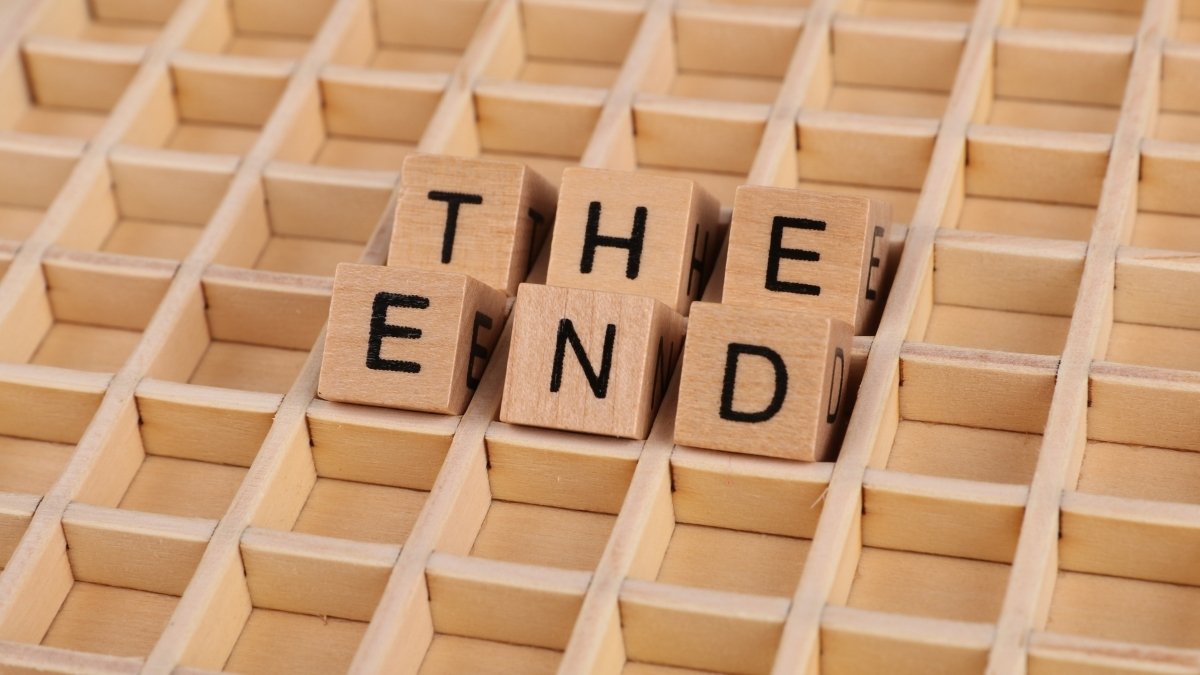
From the cellular “self-cleaning” of intermittent fasting and the “junk” protein clearance of cold exposure , to the “brain-buffering” cognitive reserve from difficult learning and the 66% dementia risk reduction from saunas , these habits empower you to take direct control of your own biology.
You do not need to do all seven at once. The first step is often the most powerful. Choose one “uncomfortable” habit. Start small. Embrace the shock. And activate your body’s innate longevity.






